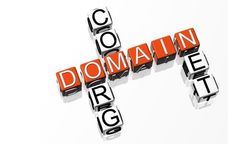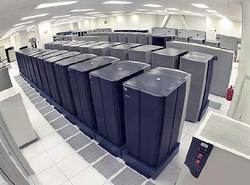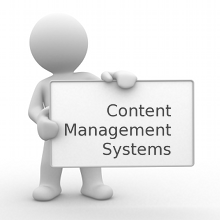
When you have a website, you want people to be able to find you. In order for people to find you, you need to have a name for your site that people can remember and use with ease. When choosing your domain name, you want to keep everything simple so that you can be found easily. And usually, should your budget allow, you want to grab as many domain names as possible. For example, if you are registering greencharity.org, you may also want to try to get greencharity.ca and greencharity.com. This way, when someone types in "greencharity.com" they will be routed to your site. You still only have one website but it gives people a wider array of options to find you.
The domain extension you use will also give information relative to who you are. Using popular domain names like .info or .com won't give any extra information about your organization. However, using a .ca or .org will let people know that you are Canadian or non-profit respectively. This can help to separate you from other entities. If people are looking specifically for the Canadian site, they may be more likely to try a .ca domain than they would be to try out a .com which could be anywhere. As well, the .ca domain names are registered by CIRA (Canadian Internet Registration Authority) who keep tight reigns on who can actually register for a .ca domain extension.

Everybody wants to be on top, be it coming first in a race or becoming the boss of the office. This is also true of domain names, you want your name to be on top. You want your domain name to be a top level domain name. What's a top level domain name? It's the root name of any site. For example, a top level domain would be www.google.com. A site like mail.google.com is called a sub domain as it is an extension of the top level www.google.com. Being a top domain name is important as if someone forgets the rest of the address, they can be routed to where ever that top level domain is. If it isn't you, they may have a very hard time finding you. Sub domains are fine, but not for your main domain name.

The next important thing to take in is the host. Your website will live on your host's servers so that they're accessible to the public. You choice of host matters for a lot of reasons. First, you want a host that provides good customer service. If you can't get a hold of them easily or it takes a week to get a response, if something goes wrong you will be in a really bad spot. Another important factor is the physical location of their servers. If their servers are located in Indonesia and most of your audience are in North America, the signal is going to take time to travel, resulting in a slower website. You want servers close to your audience or the internet backbone to ensure decent speed.

The host's servers are a big factor. If their servers aren't maintained or they don't have backup systems in place, you can lose a lot of traffic from downed servers. Since your files are stored on these servers, if they go down it can take time to get them back up if the files are lost and they do not backup their servers (you should still back up all your own data regardless of your host). Your host can also limit how much space you have for storage, how many email addresses can be created, what types of coding can be used and what content management systems they have installed. Another big factor, especially for those of us in the non-profit sector, is the cost. The cost for service can vary wildly but since most service can be purchased online. You have a lot of options. You can find affordable, reliable web hosting and help registering your domain names with GreenIT.

Content management systems (CMS) are systems that allow the average person to build more complicated, beautiful web sites easily. There are a number of different ones and they can vary drastically as to how effective they are. Drupal, Joomla and Wordpress are some of the more common systems. Typically, your host will have the systems on their server which you then install and within minutes you are ready to go. The CMS isn't installed on your computer, it lives with your site on the hosting server. So where ever you access your site, it will be there. Some, like Weebly, allow you to build your page simply by dragging and dropping content on to the page. Others you will need to do a bit more work to get the work you want but it is still a simple process.

Wordpress has been around for a while now. It has its roots as a blogging platform (it is the most popular blogging system today) but has expanded into a true content management system. According to Wikipedia.org, it is used for approximately 22% of new websites today. And there's good reason for this: It's a great program with a great support community. It is very powerful and easy to use, especially with the given plug ins and widgets. You can get your site up and running quickly using themes and plug ins, but you aren't locked to the exact theme you chose. You have full control over the HTML coding and Cascading Style Sheets (CSS) which enable you to get the look you want. Manipulating the HTML and CSS code can be difficult and complicated, but there are many different themes that should provide you with the look you want without having to touch the code.
An important thing to note is that WordPress is open source. What open source means is that anyone can modify and work with the program (meaning you have a lot of people out there who can help improve the program and create new add-ons, like themes and plug ins, easily). Better yet, the fact that it is open source means that it is free. Using WordPress won't cost a cent in and of itself. With its ease of use and low cost, WordPress is a solution that should not be missed. More and more professional web developers are switching to one form of content management system or another and the numbers are increasing. With a better finished product, easier set up and easier updates, WordPress can help your site go to the next level.

 RSS Feed
RSS Feed
